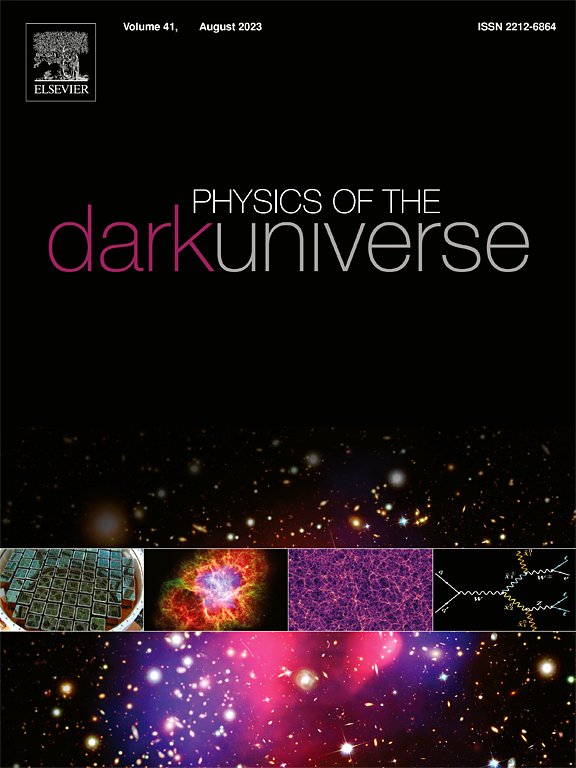Cracking and overturning of Finch–Skea stellar objects obeying Karmarkar conditions in f(R,T) gravity
IF 6.4
2区 物理与天体物理
Q1 ASTRONOMY & ASTROPHYSICS
引用次数: 0
Abstract
This work employs the cracking approach to analyze the implications of density fluctuations on anisotropic, spherically symmetric stellar models within gravity. This analysis presents the field equations and derives a corresponding equation for the equilibrium state of anisotropic stellar configurations under gravity. Further, we employed the Karmarkar conditions in conjunction with the Finch–Skea ansatz to solve corresponding equations. Additionally, we established a comprehensive framework for locating the cracking and overturning points by disrupting the configuration through local density fluctuation. The analytical framework to analyze the cracking has been deployed to the stars: SAXJ1808.4-3658, SMCX-1, 4U1538-52, EXO 1785-248, and 4U 1728-34 to assess the feasibility of the presented technique. This analysis concludes that cracking emerges in different regions of the above-mentioned stellar models. Significantly, this analysis provides notable insights into the structural dynamics of Finch–Skea stellar structures by locating the regions impacted by density disruptions, thus demonstrating the efficacy of the cracking approach.
在f(R,T)重力条件下服从Karmarkar条件的Finch-Skea恒星物体的开裂和倾覆
本研究采用裂纹方法分析f(R,T)重力下密度波动对各向异性球对称恒星模型的影响。本文给出了f(R,T)重力作用下各向异性恒星构型平衡态的场方程,并推导出相应的方程。进一步,我们将Karmarkar条件与Finch-Skea ansatz结合起来求解相应的方程。此外,我们通过局部密度波动破坏结构,建立了一个全面的框架来定位裂缝和倾覆点。用于分析裂纹的分析框架已部署到恒星:SAXJ1808.4-3658, SMCX-1, 4U1538-52, EXO 1785-248和4U 1728-34,以评估所提出技术的可行性。这一分析得出的结论是,裂纹出现在上述恒星模型的不同区域。值得注意的是,该分析通过定位受密度破坏影响的区域,为芬奇-斯基恒星结构的结构动力学提供了重要的见解,从而证明了裂缝方法的有效性。
本文章由计算机程序翻译,如有差异,请以英文原文为准。
求助全文
约1分钟内获得全文
求助全文
来源期刊

Physics of the Dark Universe
ASTRONOMY & ASTROPHYSICS-
CiteScore
9.60
自引率
7.30%
发文量
118
审稿时长
61 days
期刊介绍:
Physics of the Dark Universe is an innovative online-only journal that offers rapid publication of peer-reviewed, original research articles considered of high scientific impact.
The journal is focused on the understanding of Dark Matter, Dark Energy, Early Universe, gravitational waves and neutrinos, covering all theoretical, experimental and phenomenological aspects.
 求助内容:
求助内容: 应助结果提醒方式:
应助结果提醒方式:


